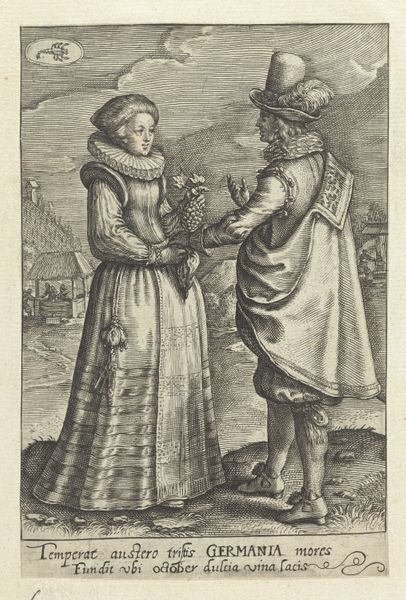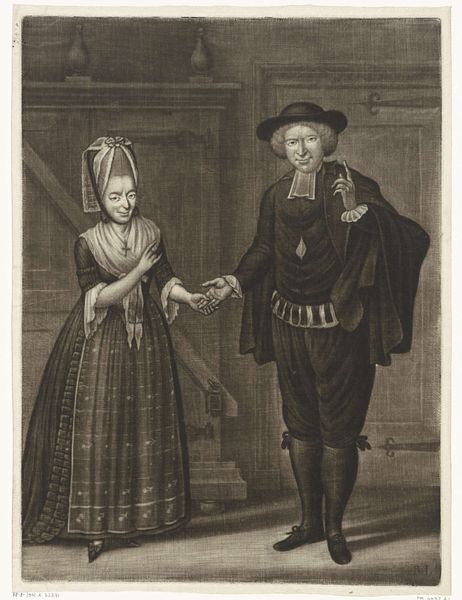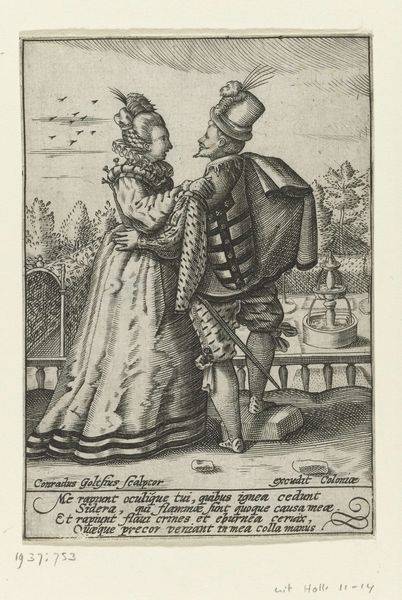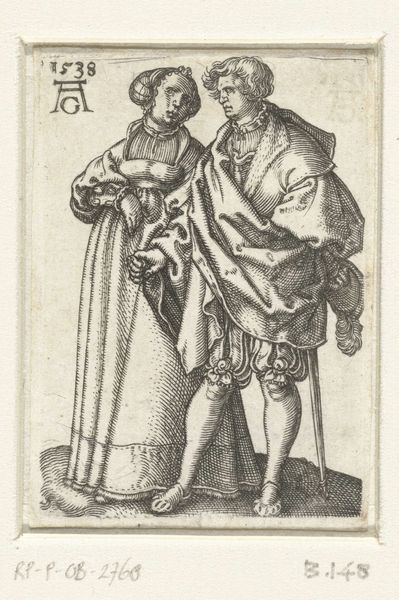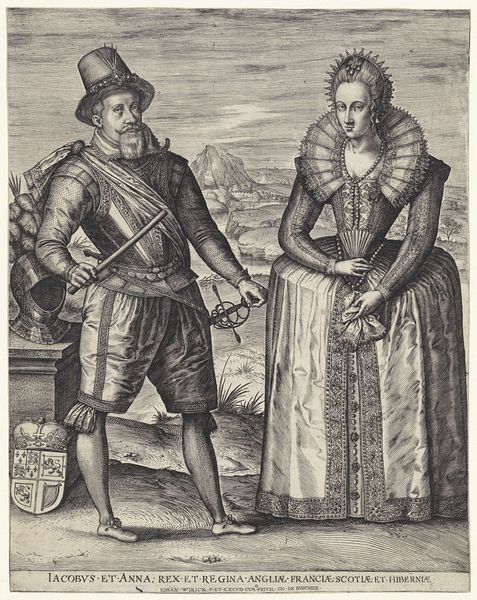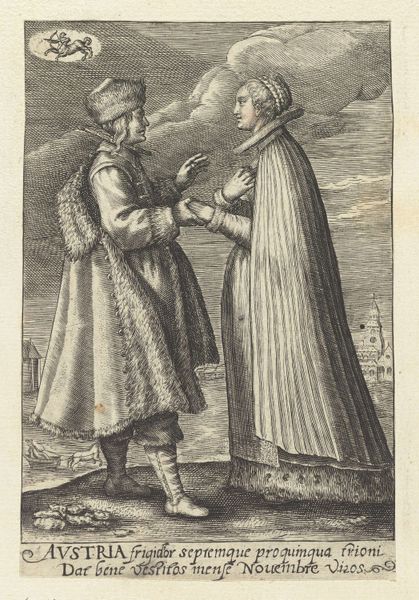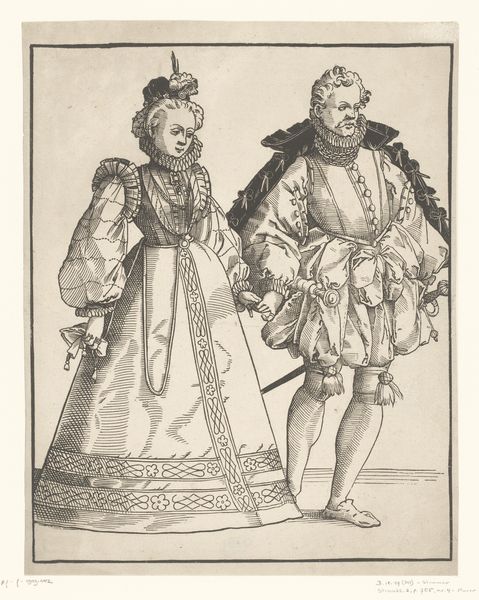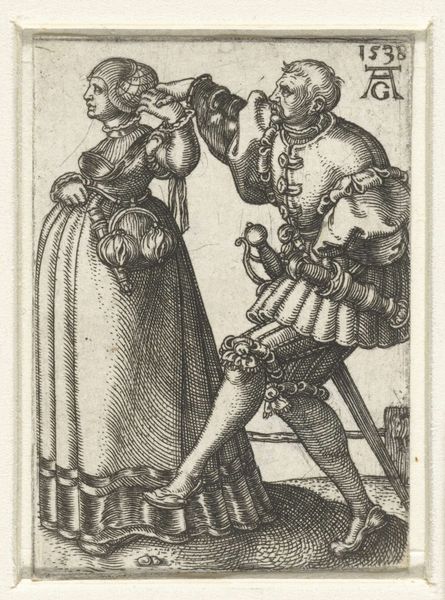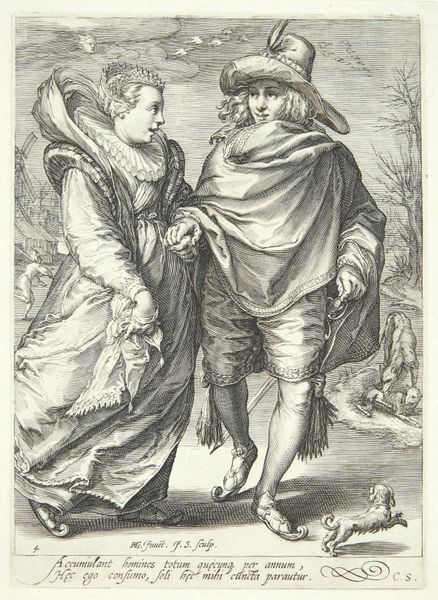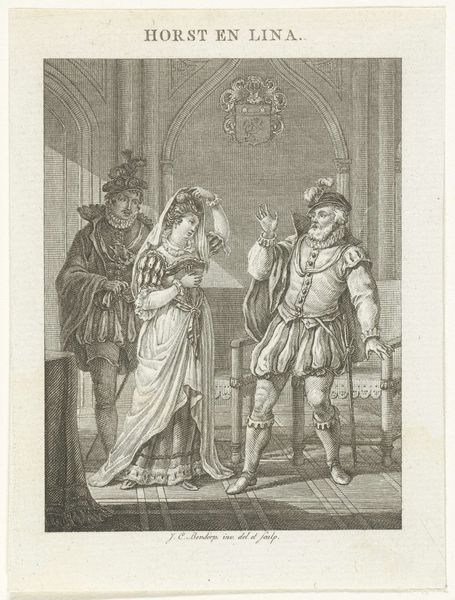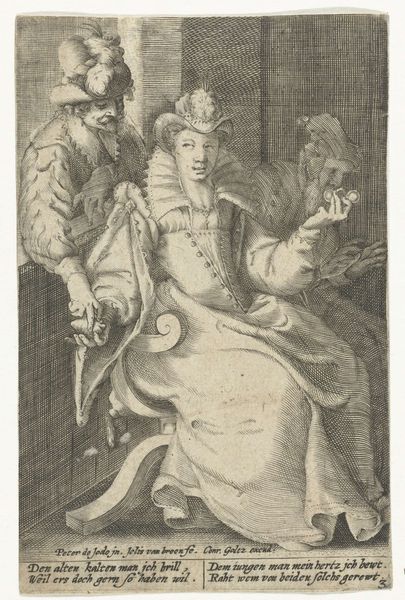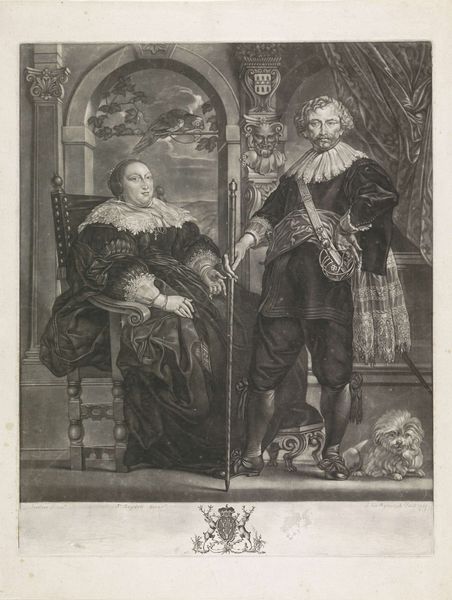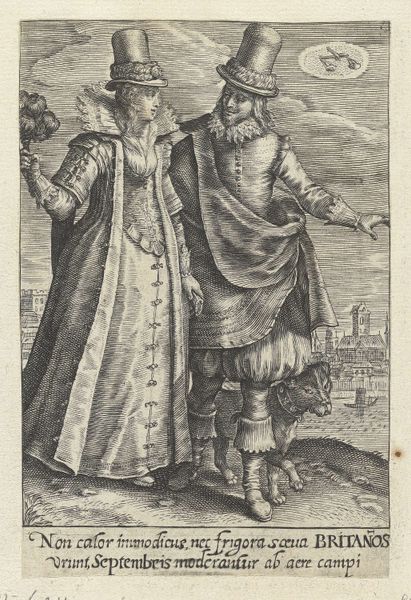
engraving
#
portrait
#
figuration
#
northern-renaissance
#
engraving
Dimensions: height 115 mm, width 91 mm
Copyright: Rijks Museum: Open Domain
Editor: This engraving, titled "Man en vrouw, gekleed volgens de mode van 1590-1600", made before 1600 by Gillis van Breen, depicts a stylish couple. It’s amazing to think about how clothing like this was actually made. What’s your take on it? Curator: We should really consider the immense labor that went into these clothes! Think about the wool production, the weaving, the dyeing – and that amazing lace! Every single piece reflects intense production efforts. These are not just images; they're material records of consumption and craft labor. Editor: Absolutely, it shows such clear hierarchies. The clothing itself signals wealth, privilege and probably political standing. How conscious were artists, like Breen, of communicating these hierarchies? Curator: I’d argue they were extremely conscious. Consider the very act of engraving: a reproductive medium making fashion accessible, visually at least, to a broader audience. These prints weren’t neutral depictions, but active participants in constructing and reinforcing those class divisions through material display. We should question who these images are FOR. Editor: That's fascinating. It highlights the accessibility of fashion through engravings and its broader consumption. Looking at this engraving through that lens brings a whole new understanding of its function. Thanks. Curator: Precisely! It urges us to investigate beyond the image and dig into the socio-economic machinery driving its very existence. Hopefully, you will continue exploring artworks with a keen awareness of how material processes and class structure shape their creation and interpretation.
Comments
No comments
Be the first to comment and join the conversation on the ultimate creative platform.
